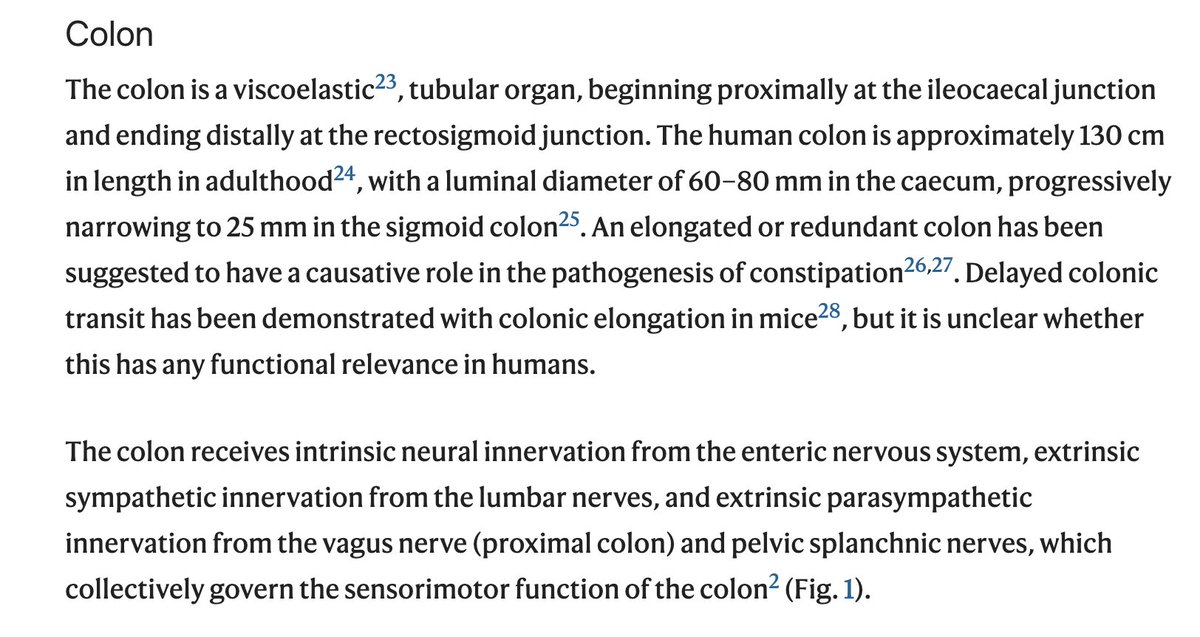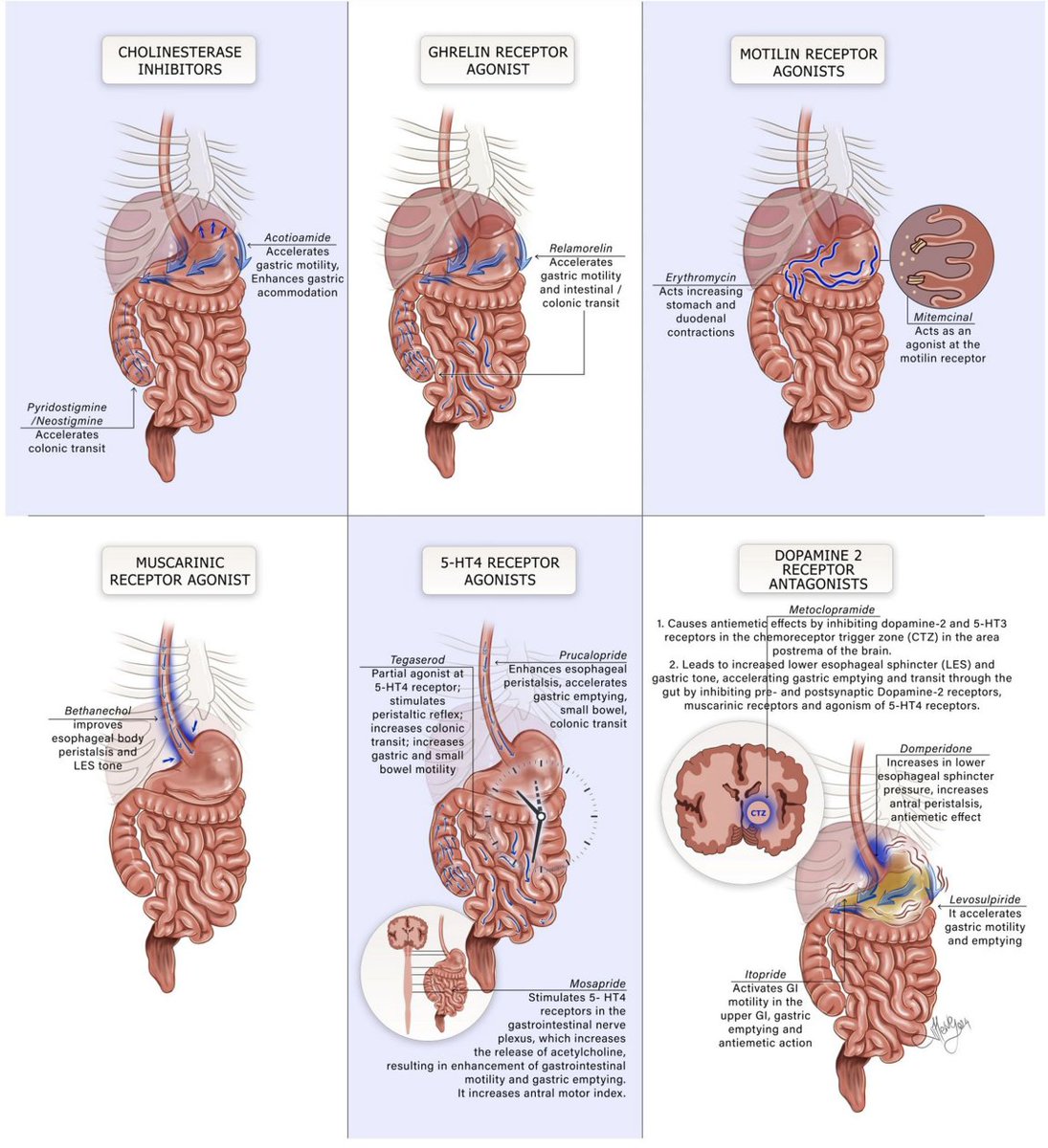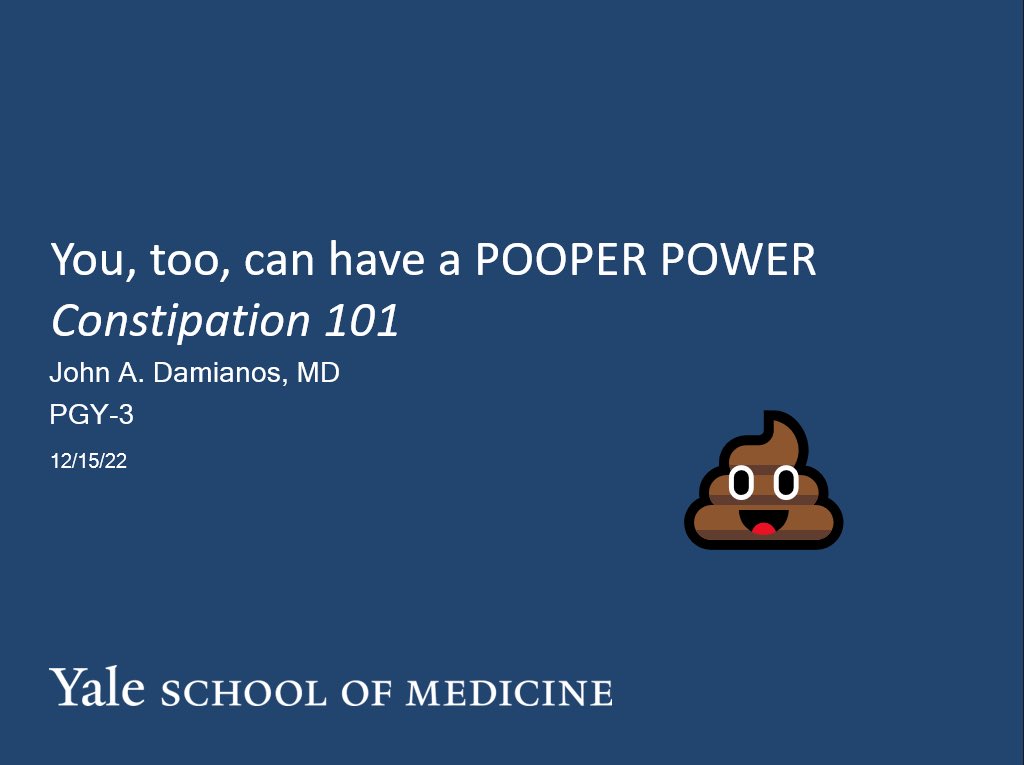Buckle up! This 🧵 is a deep dive into the #physiology of defecation, the mechanics of pooping! 🧰 🚽 💩
nature.com/articles/s4157…
#medicine #MedEd #science #GITwitter #GI #gut #motility #constipation #IBS
nature.com/articles/s4157…
#medicine #MedEd #science #GITwitter #GI #gut #motility #constipation #IBS
Defecation requires
1. intact #GI tract
2. coordination of many systems: neural (enteric nervous system, modulated by the peripheral somatic, autonomic and the CNS); muscular (smooth and striated); hormonal (endocrine and paracrine); and cognitive (behavioural and psychosocial)
1. intact #GI tract
2. coordination of many systems: neural (enteric nervous system, modulated by the peripheral somatic, autonomic and the CNS); muscular (smooth and striated); hormonal (endocrine and paracrine); and cognitive (behavioural and psychosocial)
#Constipation is the3⃣rd most common #GI symptom
💰 Annual cost of fecal incontinence and constipation: $1,594 - $7,522
💰 Annual cost of fecal incontinence and constipation: $1,594 - $7,522
The #anatomy of defecation 

Fun #anatomy facts
🦴the adult colon is ~130 cm
🦴the lumen of the anal canal is shaped like an ⏳
🦴 the anal canal is typically longer in men than women
🦴the internal anal sphincter is not under voluntary control, while the external anal sphincter is
🦴the adult colon is ~130 cm
🦴the lumen of the anal canal is shaped like an ⏳
🦴 the anal canal is typically longer in men than women
🦴the internal anal sphincter is not under voluntary control, while the external anal sphincter is
⚠️Ehlers-Danlos syndrome and other connective tissue disorders can cause laxity of pelvic floor ligaments▶️ descending perineum syndrome (presents with #constipation). Multiple vaginal deliveries and gynecologic surgery also ⬆️ risk.
Image: link.springer.com/article/10.100…
Image: link.springer.com/article/10.100…

1⃣BASAL
💩the non-pooping phase
💩colon maintains homeostasis
💩rectum is empty
💩mean colon transit time is 24h (range 4-50), which is 70-80% of total gut transit ⏰
💩digesta moves ~1cm/h in a to&fro motion
💩the non-pooping phase
💩colon maintains homeostasis
💩rectum is empty
💩mean colon transit time is 24h (range 4-50), which is 70-80% of total gut transit ⏰
💩digesta moves ~1cm/h in a to&fro motion
💩during meal, pancolonic pressurization&relaxation of anal sphincter▶️sampling
💩after meal, pooling of gas in distal colon▶️flatal urge & expulsion of 💨
💩cyclic motor pattern (active during 😴) is the rectosigmoid brake, inhibiting transit (aka colonic gatekeeper)
💩after meal, pooling of gas in distal colon▶️flatal urge & expulsion of 💨
💩cyclic motor pattern (active during 😴) is the rectosigmoid brake, inhibiting transit (aka colonic gatekeeper)

2⃣PRE-EXPULSIVE
💩propagating&non-propagating activity begins to⬆️up to 1h prior to defecation
💩subconsious! (no urge to 💩)
💩coordinated motor patterns propel💩toward the rectum
💩propagating&non-propagating activity begins to⬆️up to 1h prior to defecation
💩subconsious! (no urge to 💩)
💩coordinated motor patterns propel💩toward the rectum
💩Distension of the rectum beyond a threshold▶️ rectoanal inhibitory reflex (RAIR)▶️reflex relaxation of the IAS & contraction of the EAS
⚠️RAIR is absent in Hirschsprung disease
Image: link.springer.com/chapter/10.100…
⚠️RAIR is absent in Hirschsprung disease
Image: link.springer.com/chapter/10.100…

How do we know if it's poop or a fart?
💩transient IAS relaxations occur ~7⃣x/h, ~40% may be consciously perceived
💩during these relaxations, intraluminal pressures w/in the proximal anal canal equalize w rectal pressures▶️sampling of luminal content by anal mucosa: 💨 or 💩?
💩transient IAS relaxations occur ~7⃣x/h, ~40% may be consciously perceived
💩during these relaxations, intraluminal pressures w/in the proximal anal canal equalize w rectal pressures▶️sampling of luminal content by anal mucosa: 💨 or 💩?
💩rectal distension tells the 🧠 that it's ⏰ to poop!
💩🧠 involved: prefrontal cortex, anterior cingulate gyrus, insula, thalamus, somatosensory cortex
💩brain▶️spinal cord ▶️pudendal nerves▶️anal canal: ✅poop or 🚫poop
💩🧠 involved: prefrontal cortex, anterior cingulate gyrus, insula, thalamus, somatosensory cortex
💩brain▶️spinal cord ▶️pudendal nerves▶️anal canal: ✅poop or 🚫poop
3⃣EXPULSIVE
💩⬆️ antegrade propagating contractions, each originating more proximally, and now associated with the urge to defecate
💩cyclic motor pattern is inhibited to allow for passage of stool
💩⬆️ antegrade propagating contractions, each originating more proximally, and now associated with the urge to defecate
💩cyclic motor pattern is inhibited to allow for passage of stool
💩rectoanal pressure gradient is reversed via voluntary&involuntary processes: gradient exceeds frictional resistance of anal canal▶️deform solid feces to enable transit through anal canal
⚠️Inability to reverse gradient=dyssynergic defecation
Image: cghjournal.org/article/S1542-…
⚠️Inability to reverse gradient=dyssynergic defecation
Image: cghjournal.org/article/S1542-…

💩⬇️of anal pressure occurs via⬇️acuity of anorectal angle from 65–108° to 110–155° (⚠️squatting or a squatty potty helps facilitate this!)
💩⬆️rectal pressure via Valsalva maneuver
💩⬆️rectal pressure via Valsalva maneuver
💩during evacuation, rectosigmoid and total colonic volume⬇️by 44% and 19%
💩⬇️colonic gas volume
💩3⃣patterns of evacuation: a single, rapid expulsive motion (type 1); frequent, pulsatile expulsion of small volumes (type 2); and slow, sustained, steady expulsion (type 3)
💩⬇️colonic gas volume
💩3⃣patterns of evacuation: a single, rapid expulsive motion (type 1); frequent, pulsatile expulsion of small volumes (type 2); and slow, sustained, steady expulsion (type 3)

4⃣END PHASE
💩closing reflex: contraction of anal sphincter and pelvic floor; relaxation of the conjoint longitudinal muscle of the anal canal to enable distension of the anal endovascular cushions; contraction of puborectalis to restore the anorectal angle; and perineal ascent
💩closing reflex: contraction of anal sphincter and pelvic floor; relaxation of the conjoint longitudinal muscle of the anal canal to enable distension of the anal endovascular cushions; contraction of puborectalis to restore the anorectal angle; and perineal ascent
Normal pooping frequency? Between 3/d - 3/wk.
💩 💩 💩
💩 💩 💩
Factors influencing defecation:
🧠stress, anxiety, abuse, stool withholding
🚽posture (squatty potty!)
💩consistency and volume
⏰transit time (slower time, harder 💩)
🦠microbiome (eg ⬆️methanogens)
😴circadian rhythm (motility inhibited during 😴 and stimulated upon waking)
🧠stress, anxiety, abuse, stool withholding
🚽posture (squatty potty!)
💩consistency and volume
⏰transit time (slower time, harder 💩)
🦠microbiome (eg ⬆️methanogens)
😴circadian rhythm (motility inhibited during 😴 and stimulated upon waking)
🍲gastrocolic reflex
🥝dietary fiber (every 1 g increase in wheat fiber⬆️💩 volume by 3.7±0.09g/d)
🧓age⬇️motility
👩constipation more common in F>M
🤰parity▶️pelvic floor damage
💊opioids and other meds
🚴exercise
🥝dietary fiber (every 1 g increase in wheat fiber⬆️💩 volume by 3.7±0.09g/d)
🧓age⬇️motility
👩constipation more common in F>M
🤰parity▶️pelvic floor damage
💊opioids and other meds
🚴exercise

Other fun facts from the article!
💩 poop is predominantly water (median💧content 75%) plus a suspension of bacterial biomass, protein, carbohydrates, & lipids
💩median fecal wet mass of 128 g per day
💩 poop is predominantly water (median💧content 75%) plus a suspension of bacterial biomass, protein, carbohydrates, & lipids
💩median fecal wet mass of 128 g per day
🥇Best line in the article: "Propulsive HAPCs can be associated with morning waking and also with the morning call to defaecate"
"call to defecate" is my new favorite phrase
"call to defecate" is my new favorite phrase
That's all, folks! I hope you enjoyed this deep dive into the mechanics of defecation!
#GITwitter #motility
#GITwitter #motility
@MTPapaD @LinChangMD @LindaNguyenMD @NGMJournal @NatRevGastroHep @KewinSiah @drkeithsiau @IBS_Maastricht @WalterChanMD @JeffConklinMD @AllonKahn @JohannahRuddy @IBSpatient @GiJournal @SultanMahmoodMD @IrisWangMD @NeenaSAbrahamMD @KristleLynchMD @JCPetrov @loulev_md
• • •
Missing some Tweet in this thread? You can try to
force a refresh














































